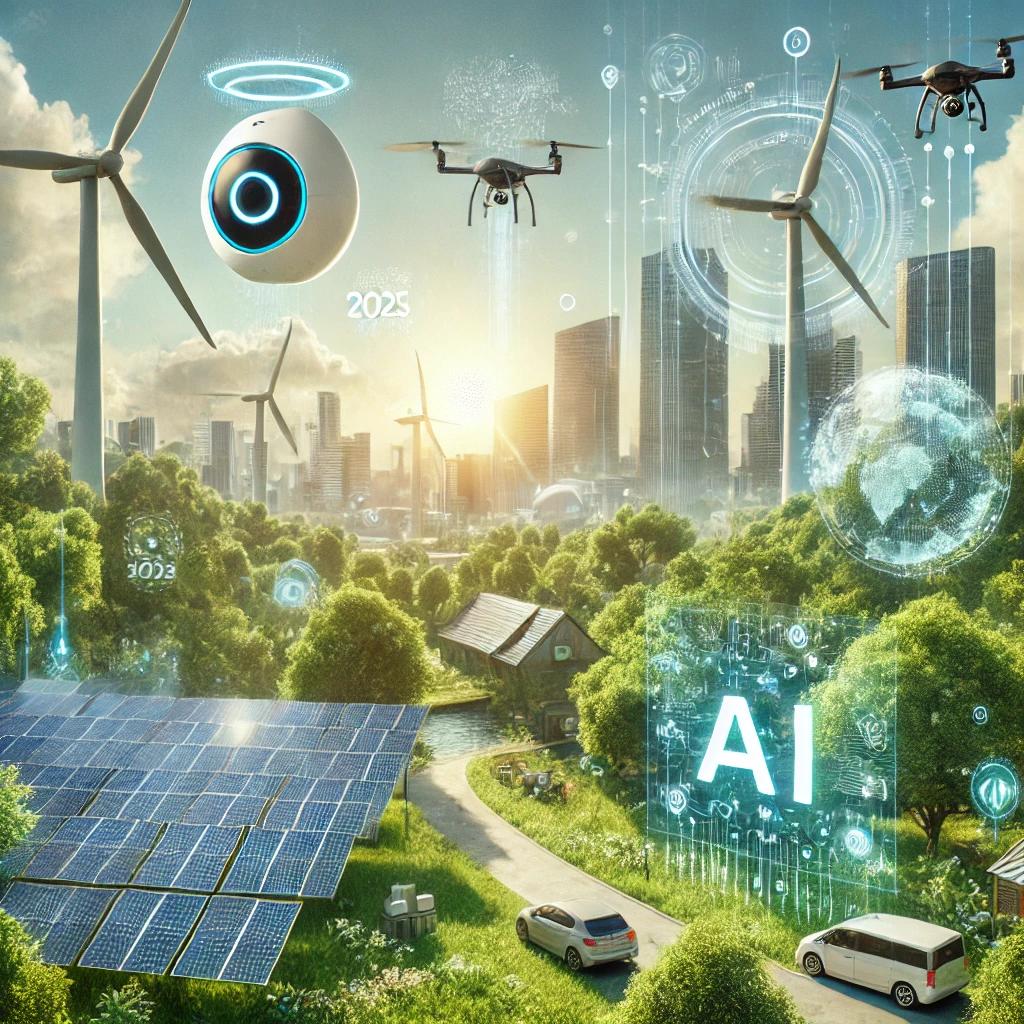2025 Will Be the Year Climate Tech Learns to Love AI
As we move deeper into the 21st century, the challenges posed by climate change have become increasingly urgent. The intersection of technology and environmental sustainability has never been more critical. In this context, artificial intelligence (AI) emerges as a transformative force capable of revolutionizing climate tech. By 2025, we anticipate significant progress in the way AI is embraced within the climate technology sector, paving the way for innovative solutions that could mitigate the impacts of climate change.
The Growing Importance of Climate Tech
Climate tech refers to a broad range of technologies aimed at addressing the challenges of climate change. This includes renewable energy technologies, carbon capture solutions, sustainable agriculture practices, and more. The increasing frequency of climate-related disasters—such as wildfires, hurricanes, and floods—has underscored the need for effective climate solutions.
Investment in climate tech has surged in recent years, driven by both public and private funding. According to reports, global investment in climate tech reached record levels, signaling a robust commitment to sustainable innovation. However, these investments must be matched with technological advancements to yield meaningful results.
The Role of Artificial Intelligence
Artificial intelligence offers unparalleled capabilities that can enhance the efficacy of climate tech. With its ability to analyze vast amounts of data, identify patterns, and optimize processes, AI holds the key to unlocking new methods of addressing climate challenges. Some of the areas where AI can have the greatest impact include:
- Energy Efficiency: AI can optimize energy consumption in buildings and industrial processes, reducing overall energy demand.
- Predictive Analytics: AI can analyze weather patterns and predict extreme weather events, allowing communities to better prepare for natural disasters.
- Carbon Tracking: AI can facilitate accurate measurement and reporting of carbon emissions, helping organizations comply with regulations and set reduction targets.
- Sustainable Agriculture: AI-driven solutions can improve crop yields while minimizing resource use, contributing to food security and ecological sustainability.
The integration of AI into climate tech not only enhances efficiency but also provides cost savings, making sustainable practices more economically viable.
Barriers to AI Adoption in Climate Tech
Despite the potential benefits, the adoption of AI in climate tech has faced several hurdles. One major challenge lies in the availability and quality of data. AI systems require high-quality, diverse datasets to train effectively. In many cases, environmental data can be sparse, inconsistent, or difficult to obtain, hindering the development of robust AI applications.
Moreover, there is a skills gap in the workforce. While there are numerous professionals skilled in AI, there are fewer individuals who possess a deep understanding of both AI and climate science. Bridging this gap will be essential to ensure that AI solutions are developed and implemented effectively.
Finally, there are ethical and regulatory considerations. As AI technologies evolve, it is critical to ensure that they are used responsibly and do not inadvertently cause harm to the environment or society. Establishing ethical guidelines and regulatory frameworks will be crucial in shaping the future of AI in climate tech.
Looking Ahead to 2025
The year 2025 is poised to be a significant turning point for the relationship between climate tech and AI. Here are several key developments we anticipate:
- Increased Collaboration: We expect to see greater collaboration between tech companies, climate scientists, and policymakers. This cross-disciplinary approach will foster innovation and accelerate the development of AI-driven climate solutions.
- Investment in Research and Development: As the demand for climate solutions continues to rise, funding for research and development in AI and climate tech will likely increase. This investment will catalyze breakthroughs and the emergence of new technologies.
- Enhanced Education and Training: To address the skills gap, educational institutions and organizations will begin to offer more specialized programs that combine AI training with environmental science. This will equip the next generation of professionals with the necessary skills to thrive in this interdisciplinary field.
- Regulatory Frameworks: As AI technologies become more prevalent in climate tech, we anticipate the establishment of regulatory frameworks that address ethical considerations and ensure responsible usage.
Conclusion
As we approach 2025, the synergy between AI and climate tech is set to transform the landscape of environmental sustainability. By harnessing the power of AI, we can expedite our progress toward a more sustainable future. However, this will require a concerted effort among stakeholders, including businesses, governments, and educational institutions.
Through collaboration, investment, and the establishment of ethical guidelines, we can unlock the full potential of AI in climate tech. The challenges posed by climate change are daunting, but with innovation and determination, we can work toward solutions that benefit both the planet and future generations. The year 2025 is not just a target date; it represents a pivotal moment in the fight against climate change, where technology and sustainability converge for a brighter future.



